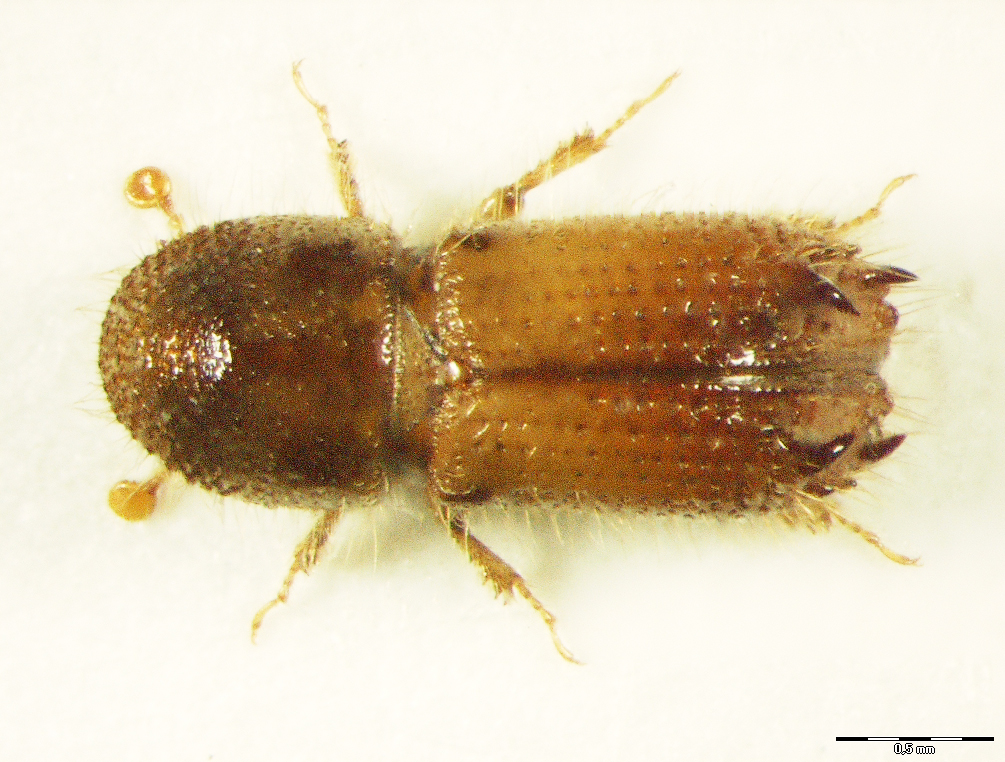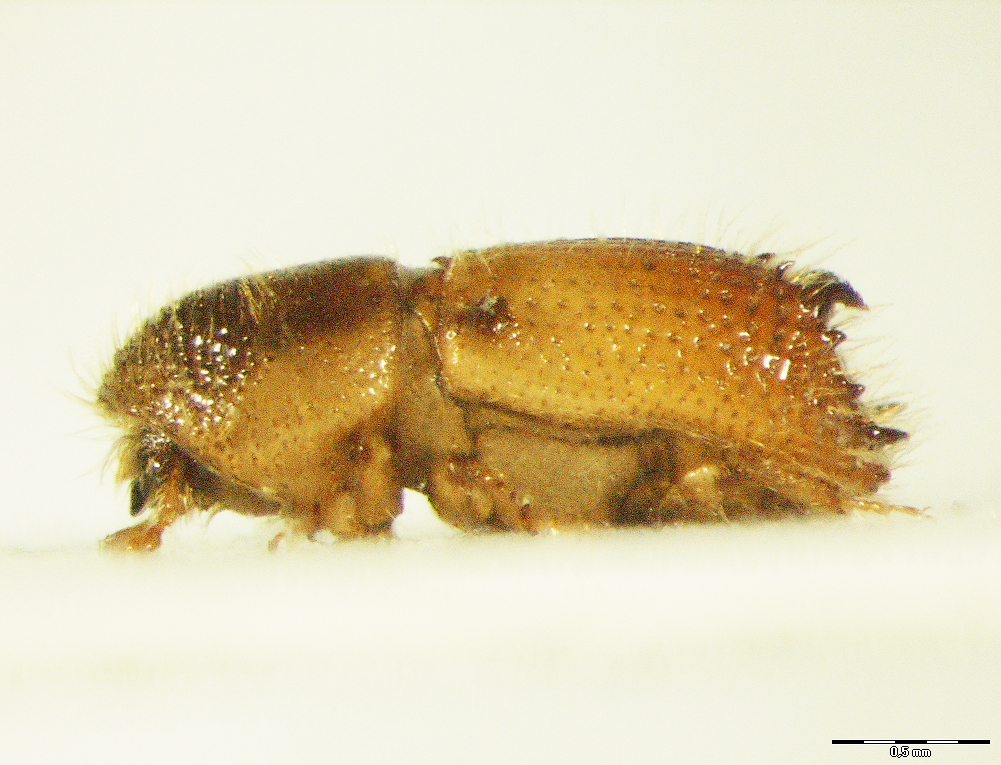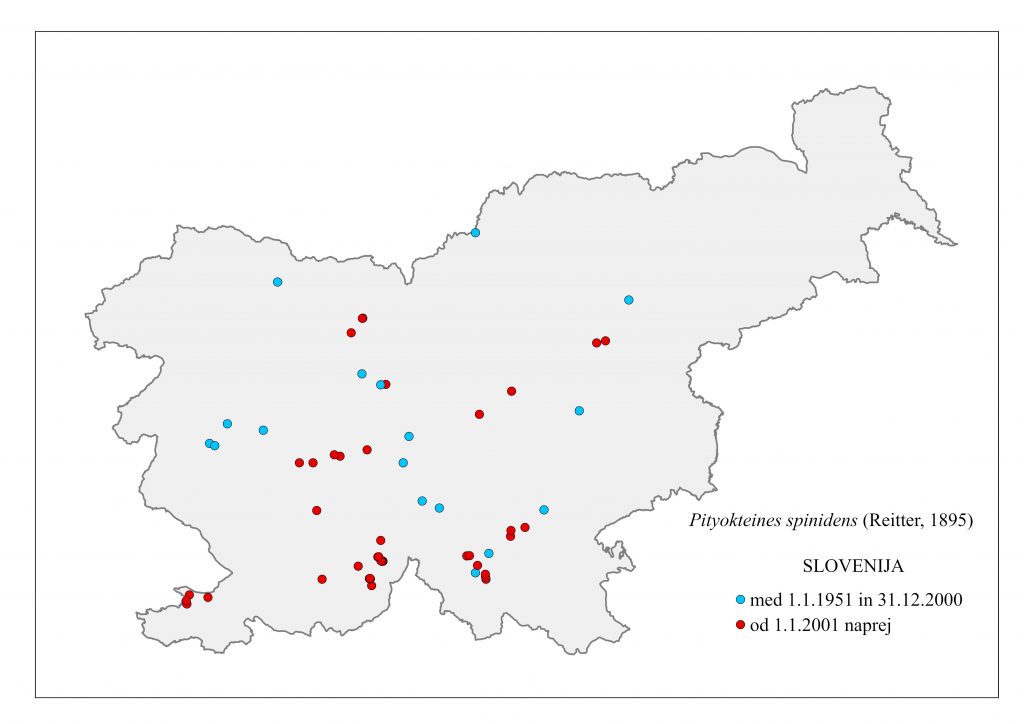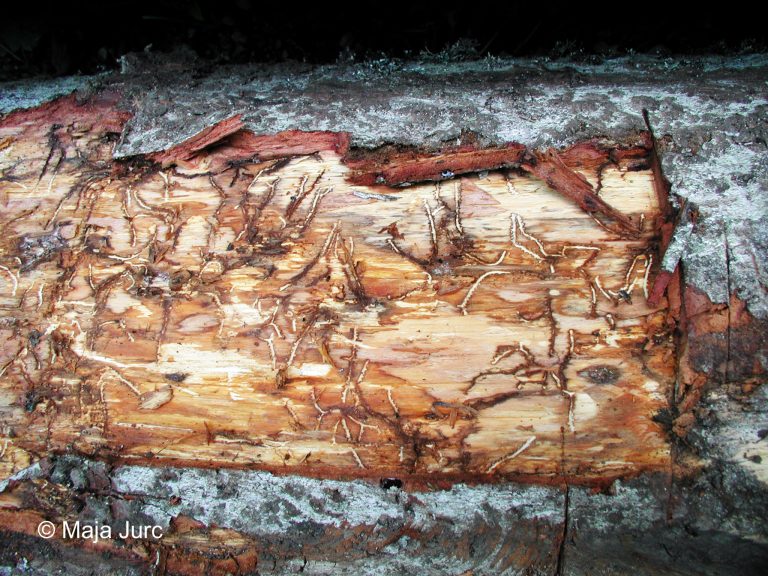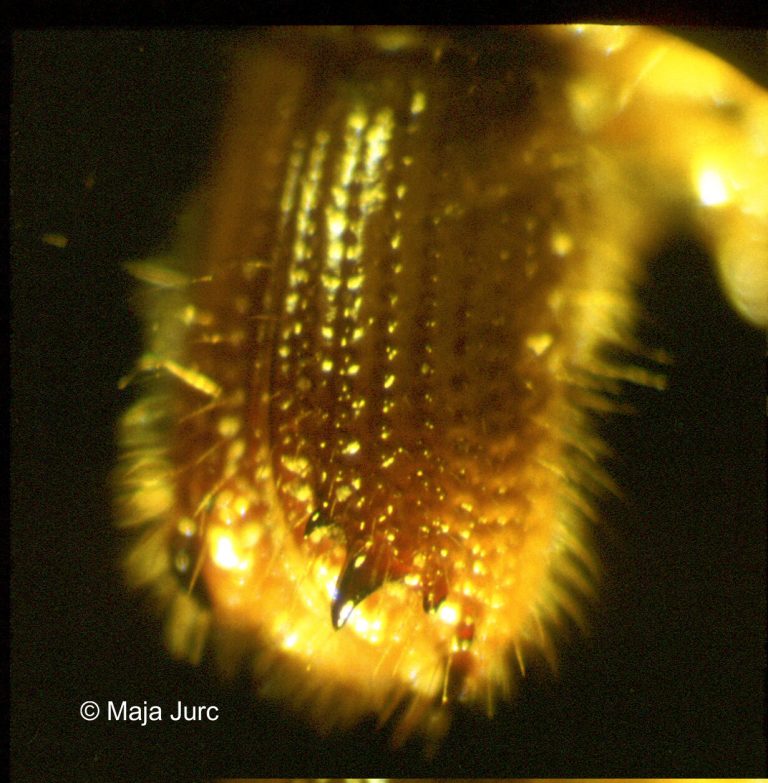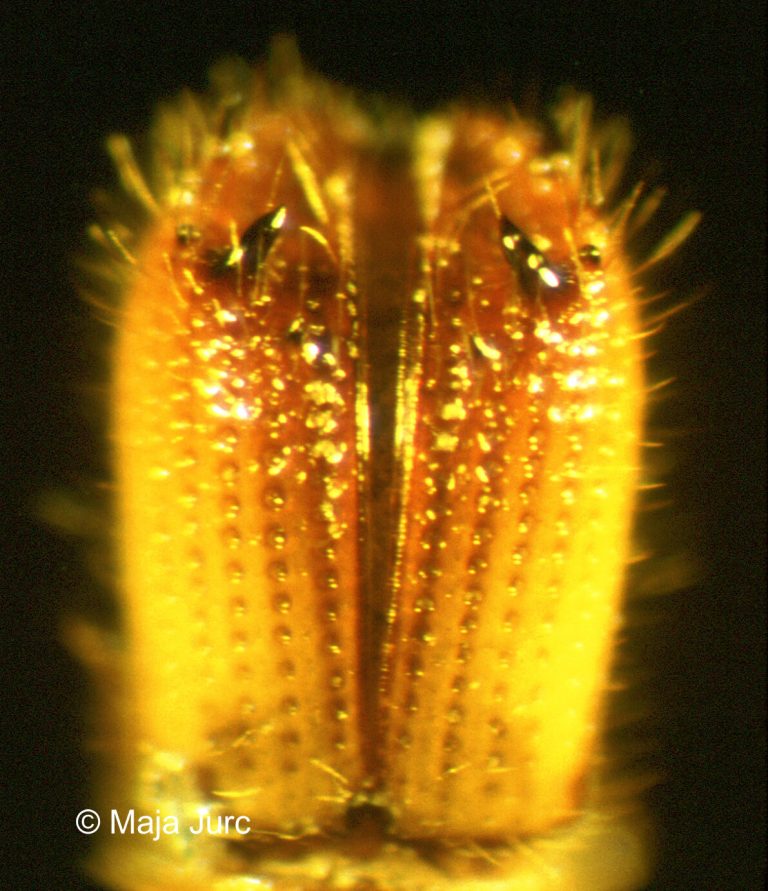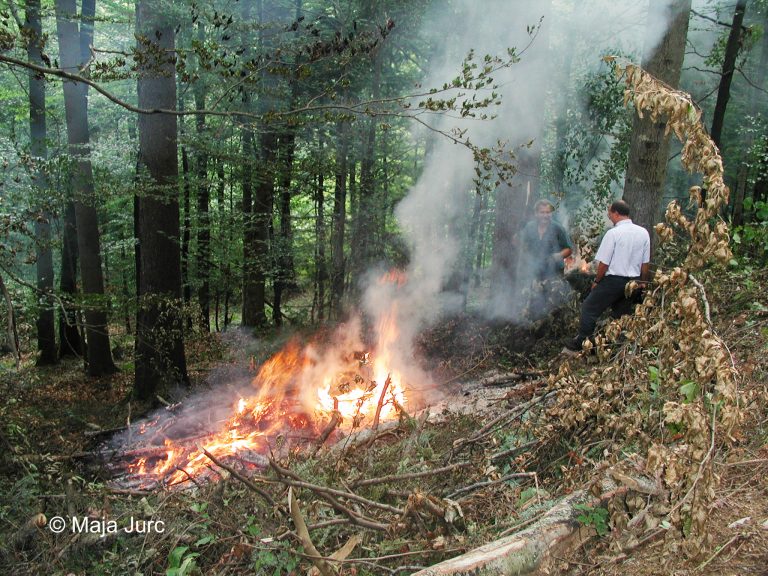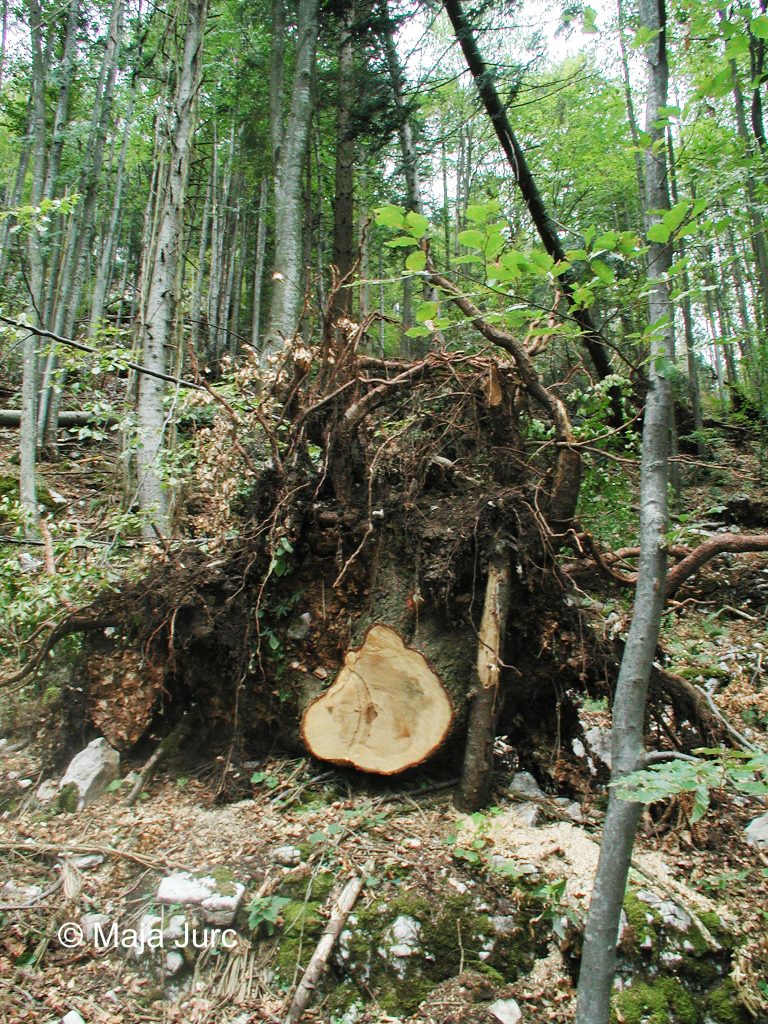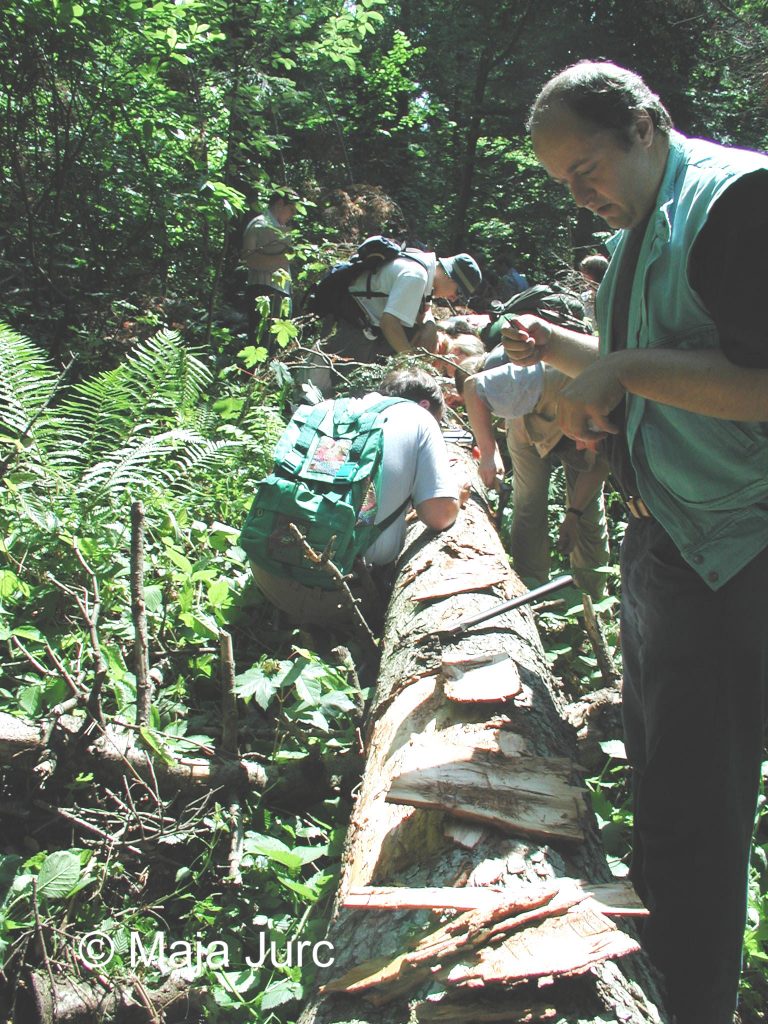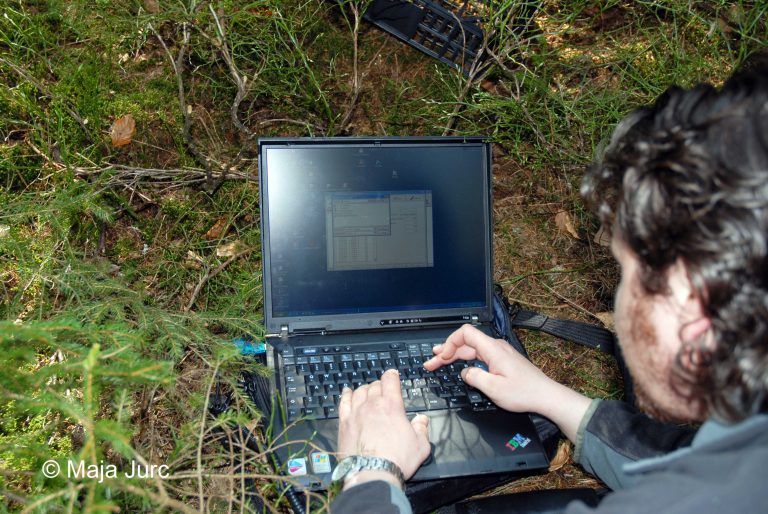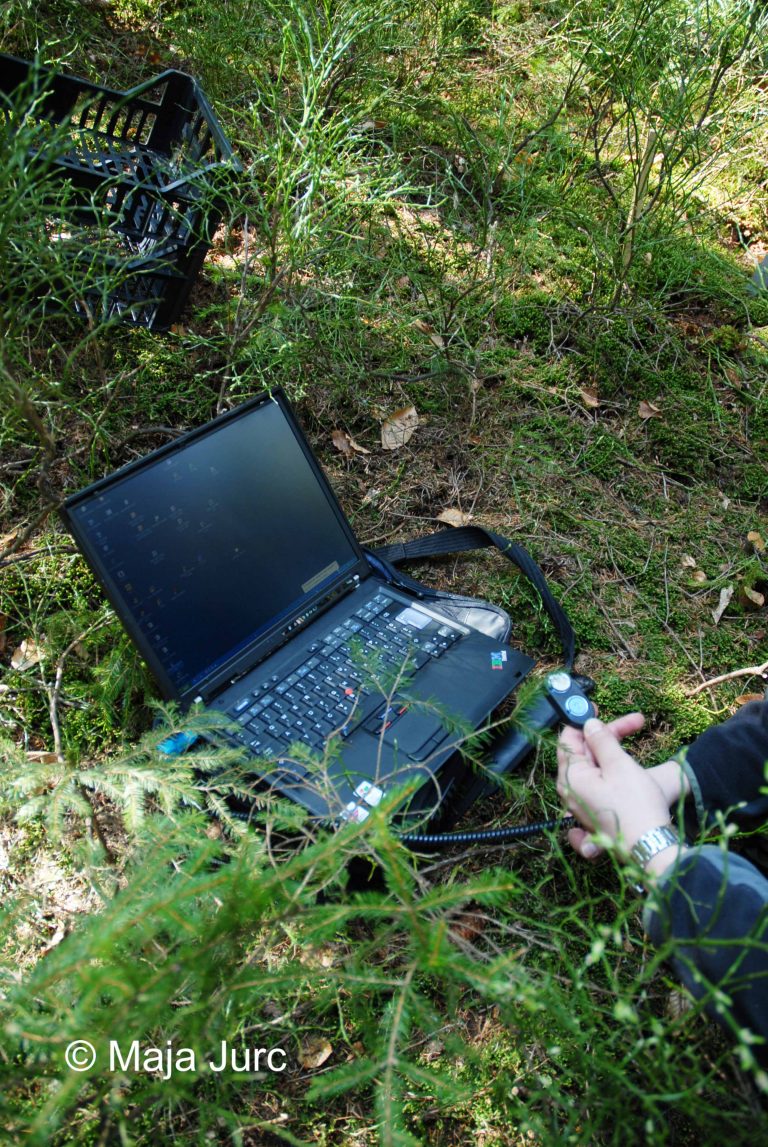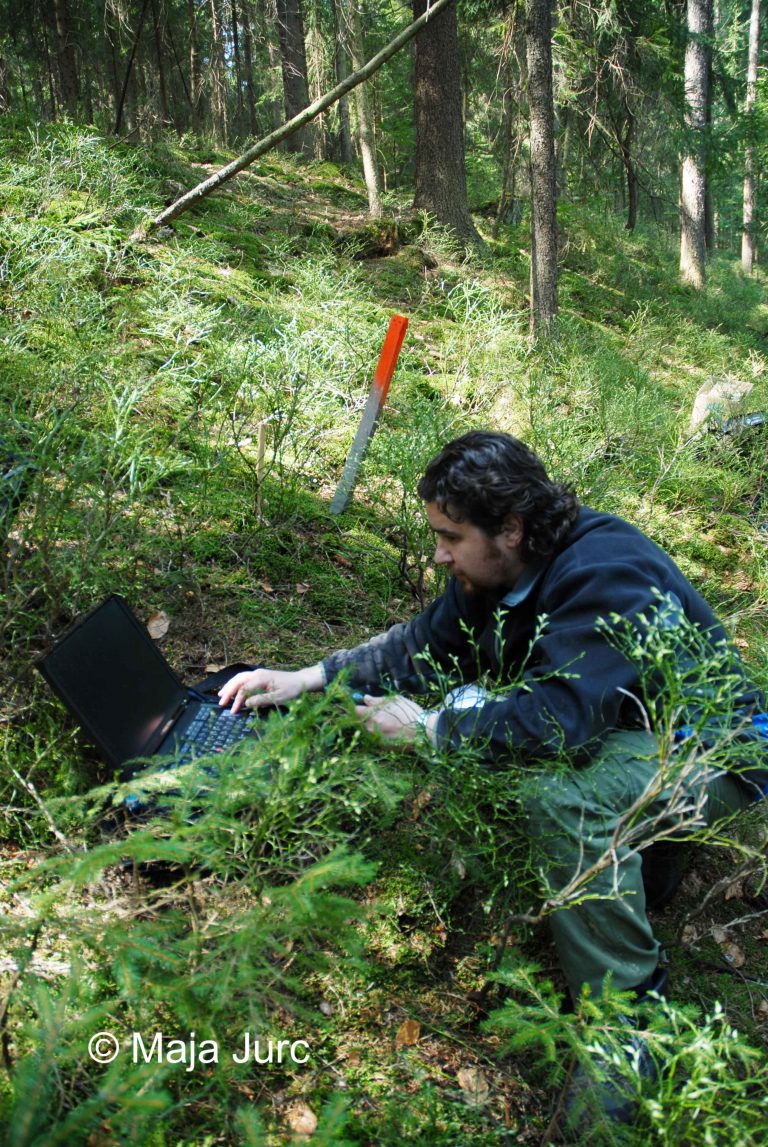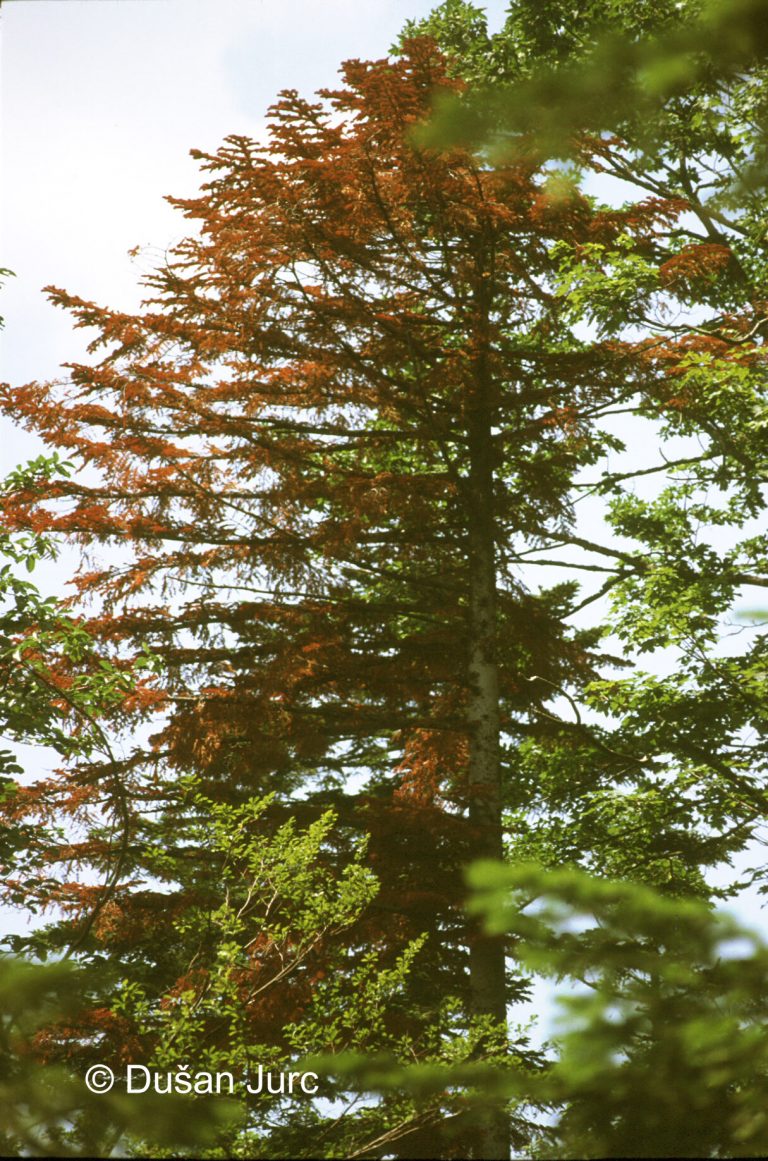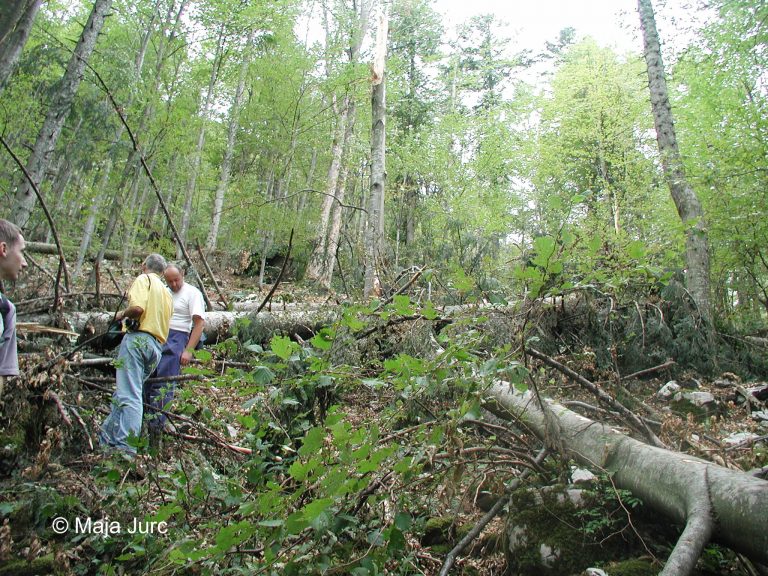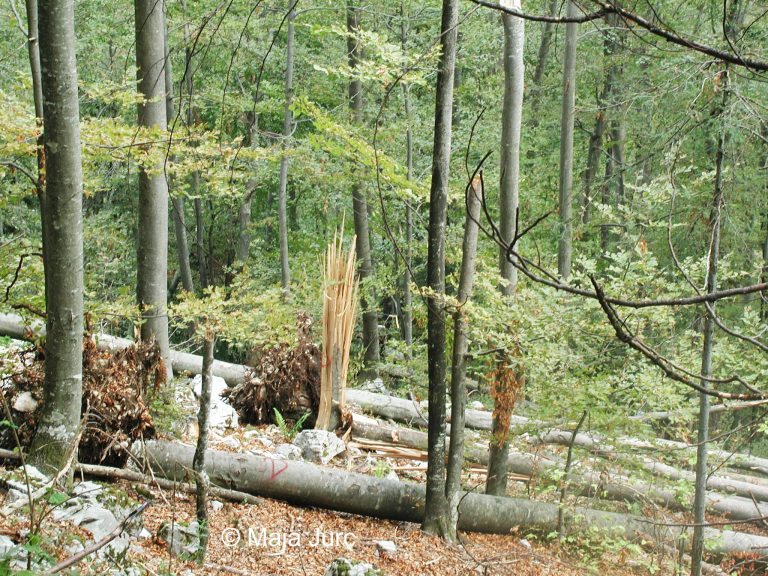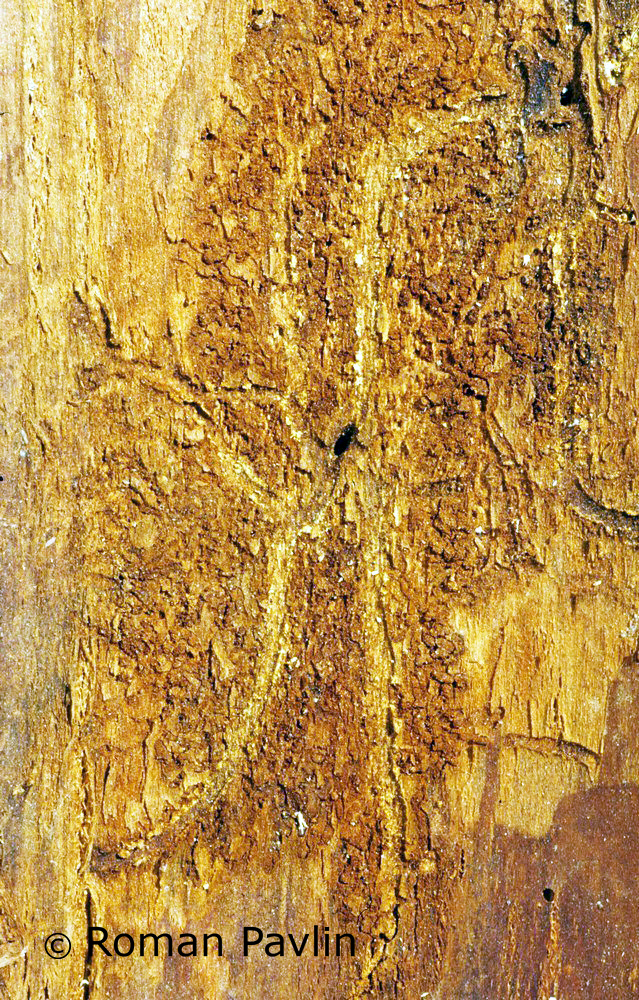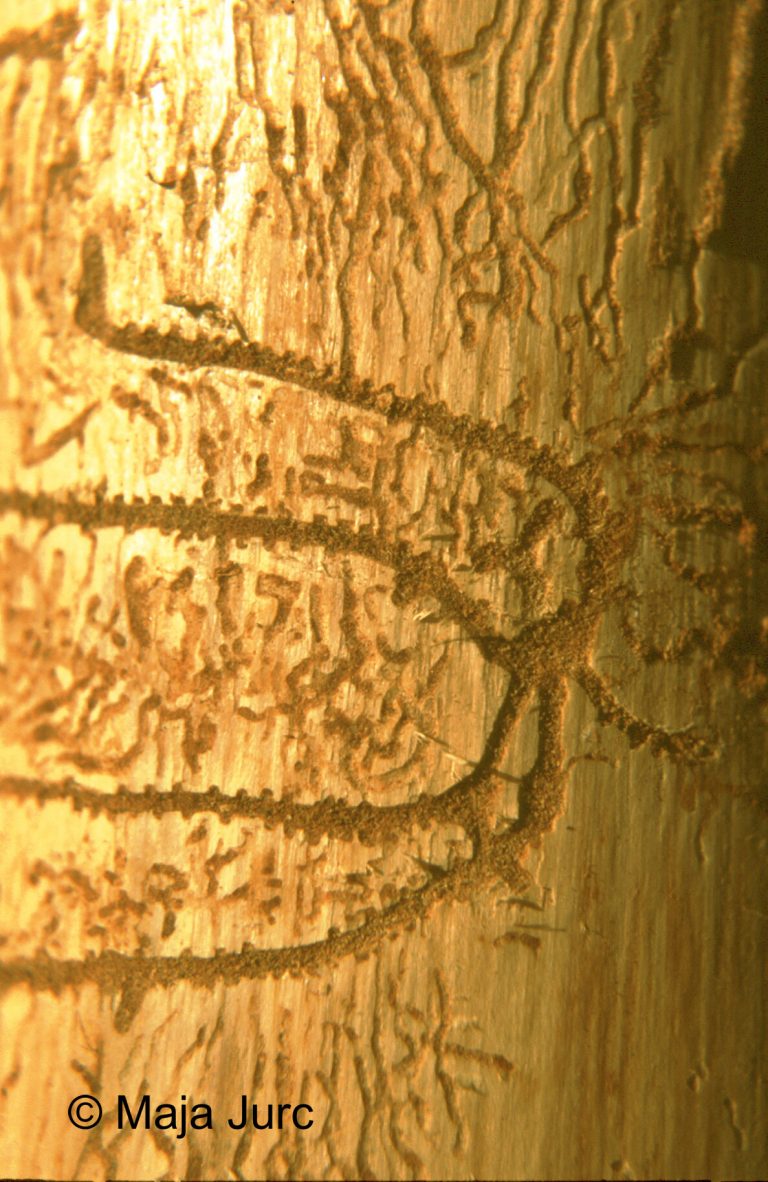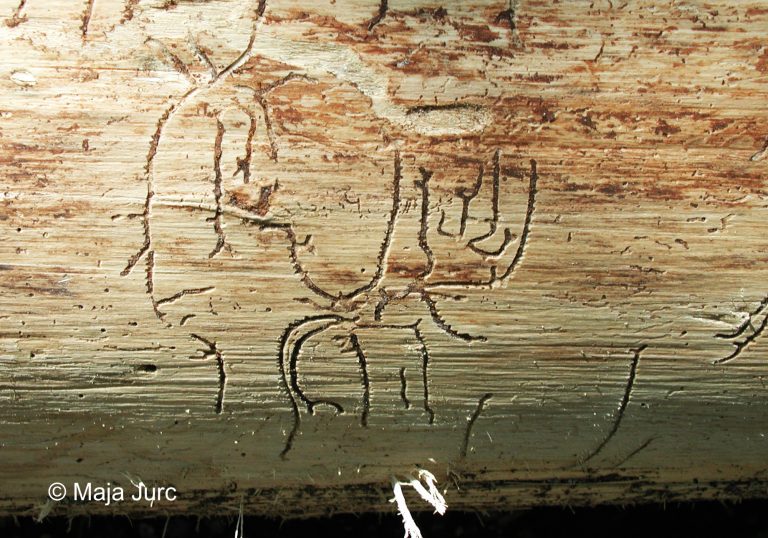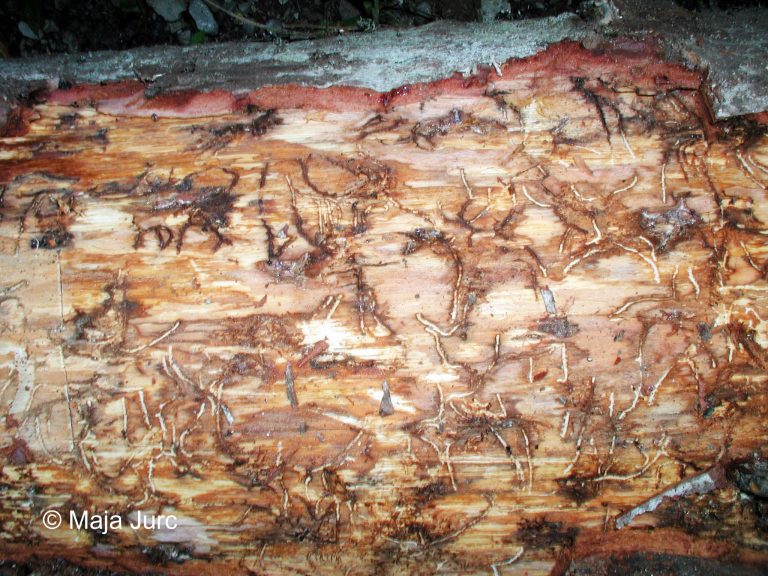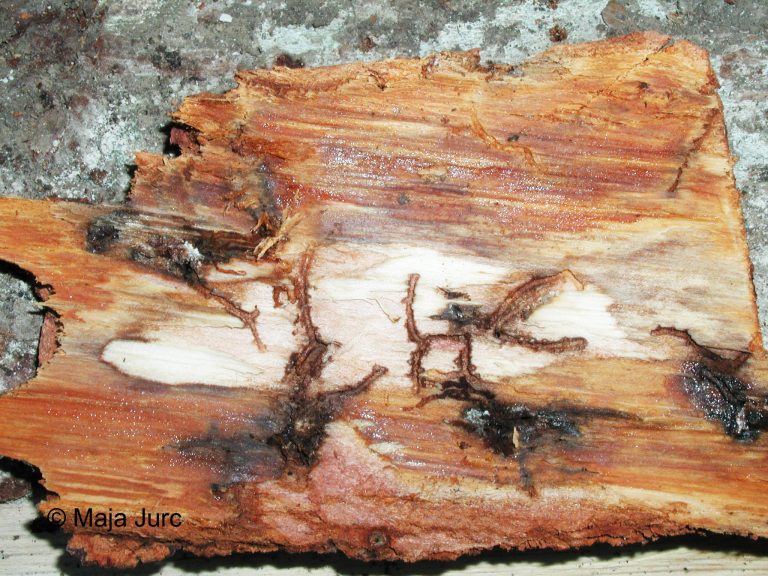31.03. Pityokteines spinidens (Reitter, 1895)
Presence
E: AU BH BU CR CZ FR GE GR HU IT LS NT PL RO SK SL* SP ST SZ YU
A: SC TR
Figure 145: Pityokteines spinidens, dorsal, lateral (Photo: Maja Jurc)
Older catalogs and keys – citations of name
Grüne 1979: Pityokteines spinidens Reitter, 1895; Freude, Harde, Lohse 1981: Pityokteines spinidens Reitter; Titovšek 1988: Pityokteines spinidens (Reitter); Pfeffer & Knížek 1993: Pityokteines spinidens (Reitter, 1894); Pfeffer 1995: P. spinidens (Reitter, 1894).
Figure 146: Pityokteines spinidens, distribution map according to historical and recent data
Ecology and presence in Slovenia
The species is distributed in in the fir range of central and south-eastern Europe, Corsica, the Caucasus, western Ukraine and Asia Minor. In Slovenia, P. spinidens is the most common bark beetle on fir, with sites throughout the country, with the exception of Prekmurje and Bela Krajina (Figure 146). The main hosts are Abies alba, A. cephalonica and A. nordmanniana, less frequently Picea abies, P. orientalis, Larix decidua and Pinus sylvestris. In Slovene territory, the species has been found exclusively on A. alba. The numerous records in traps set in pure stands of Pinus sylvestris (Brdo pri Kranju) are due to the effective attraction of pheromones. It develops two generations per year, swarming in April and August. The tunnel system is star-shaped, usually with 4 maternal galleries, often longitudinally oriented. It inhabits thin-bark and thick-bark parts of trees, especially the upper, thinner part of the trunk and the thicker branches. Adult length is 1.9-2.8 mm. The elytra curve abruptly to the posterior sternite at the end. Males have three larger and two smaller denticles on each side of the apex. All the larger denticles are almost horizontal, the two smaller denticles are located between the second and third larger denticles. Females have only small protrusions on the apex instead of denticles, and thick, yellow hairs on the forehead (Figure 145). Young sexually mature beetles overwinter in the trunks of healthy fir trees, making the species both secondary and primary. It is often found in the lower, thicker part of the trunk together with P. curvidens. Due to its broad range. P. spinidens has the great economic importance among all bark beetles in our country.in Slovenia. Pheromones: Ipsenol, Ipsdienol in (Harring, Candace et al. 1975; Harring, Candace 1978).

